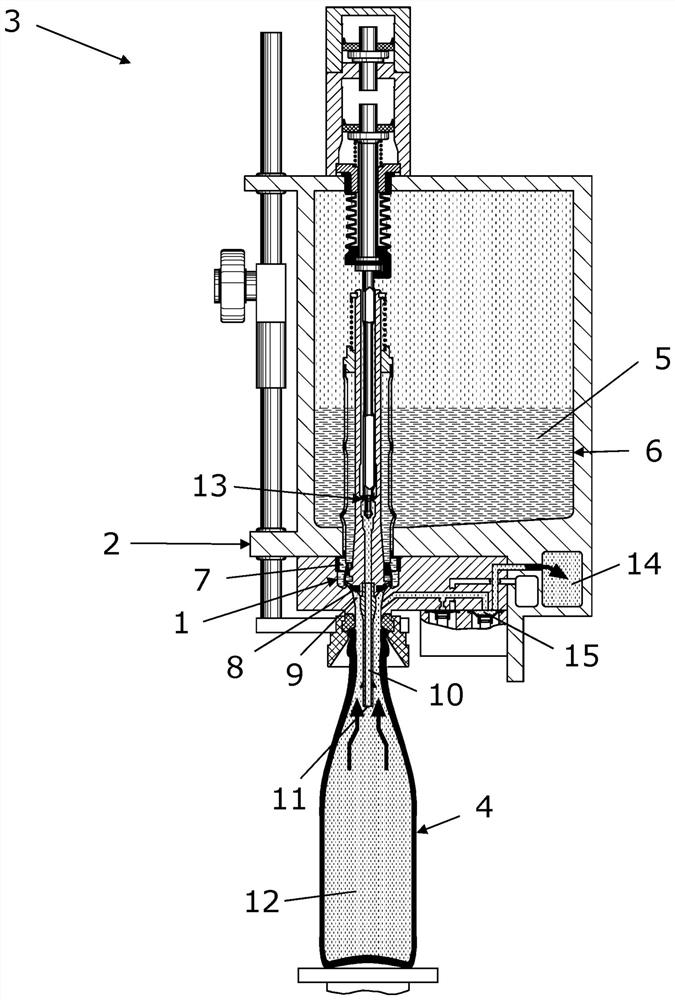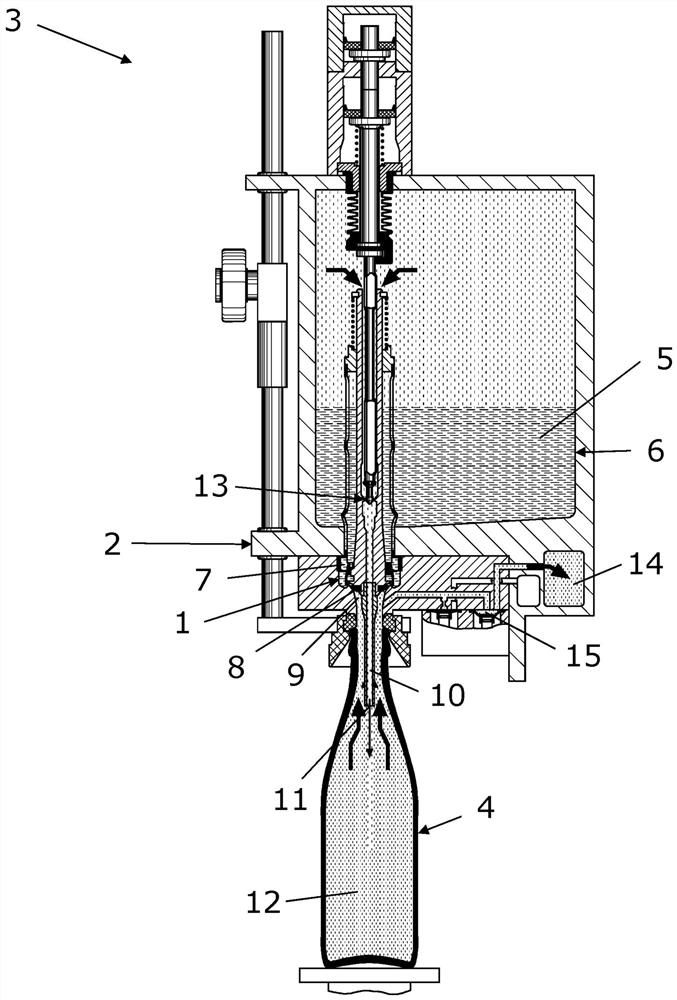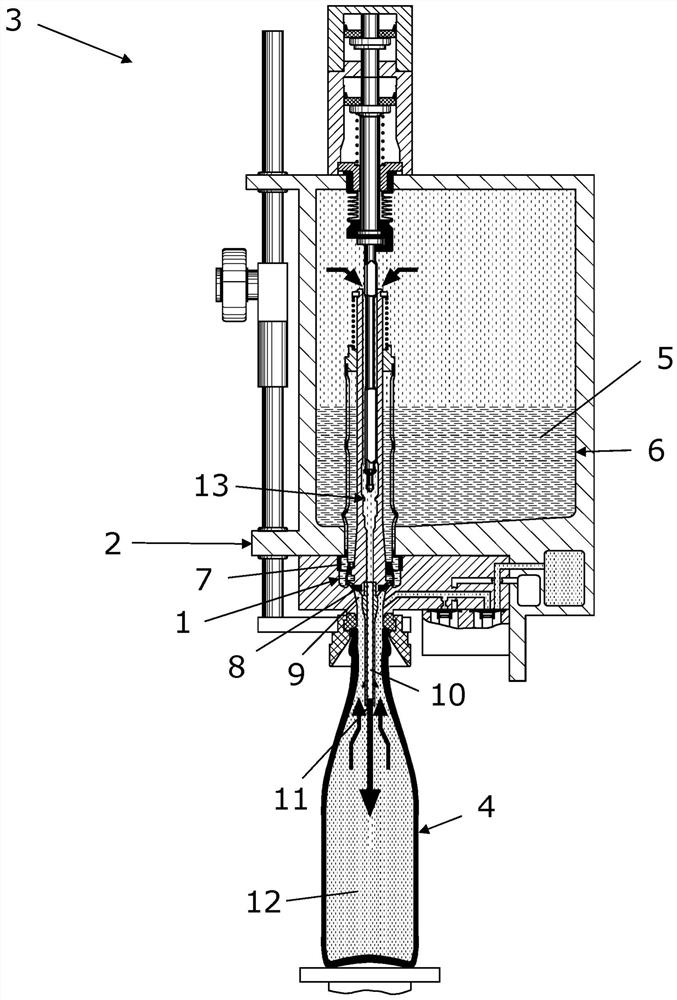Filling element, filling system and method for filling containers
A technology for filling components and containers, applied in liquid filling, transportation and packaging, using back pressure perfusion, etc., can solve problems such as technical cost and power loss
- Summary
- Abstract
- Description
- Claims
- Application Information
AI Technical Summary
Problems solved by technology
Method used
Image
Examples
Embodiment Construction
[0043] Figures 1a-1e A longitudinal section through a filling element 1 according to the invention is shown in each case by way of example at different points in time during the filling process. Here, the filling element 1 is arranged on a delivery element 2 of a filling system 3 , of which only a section is shown here.
[0044] Preferably during the filling process a container 4 is connected to the filling element 1 according to the invention, which container 4 is to be filled with a liquid filling 5 which is prepared in a filling reservoir 6 . exist Figures 1a-1e In the figure, the container 4 is shown as a bottle, however, the filling element 1 and the associated filling method are also suitable for other containers, such as jars or cups, with minor modifications customary in the industry.
[0045] In principle, every kind of liquid that can be filled in the container 4 can be considered as the liquid filler 5, however, in particular, the filling element 1 and the filling...
PUM
 Login to View More
Login to View More Abstract
Description
Claims
Application Information
 Login to View More
Login to View More - R&D
- Intellectual Property
- Life Sciences
- Materials
- Tech Scout
- Unparalleled Data Quality
- Higher Quality Content
- 60% Fewer Hallucinations
Browse by: Latest US Patents, China's latest patents, Technical Efficacy Thesaurus, Application Domain, Technology Topic, Popular Technical Reports.
© 2025 PatSnap. All rights reserved.Legal|Privacy policy|Modern Slavery Act Transparency Statement|Sitemap|About US| Contact US: help@patsnap.com



